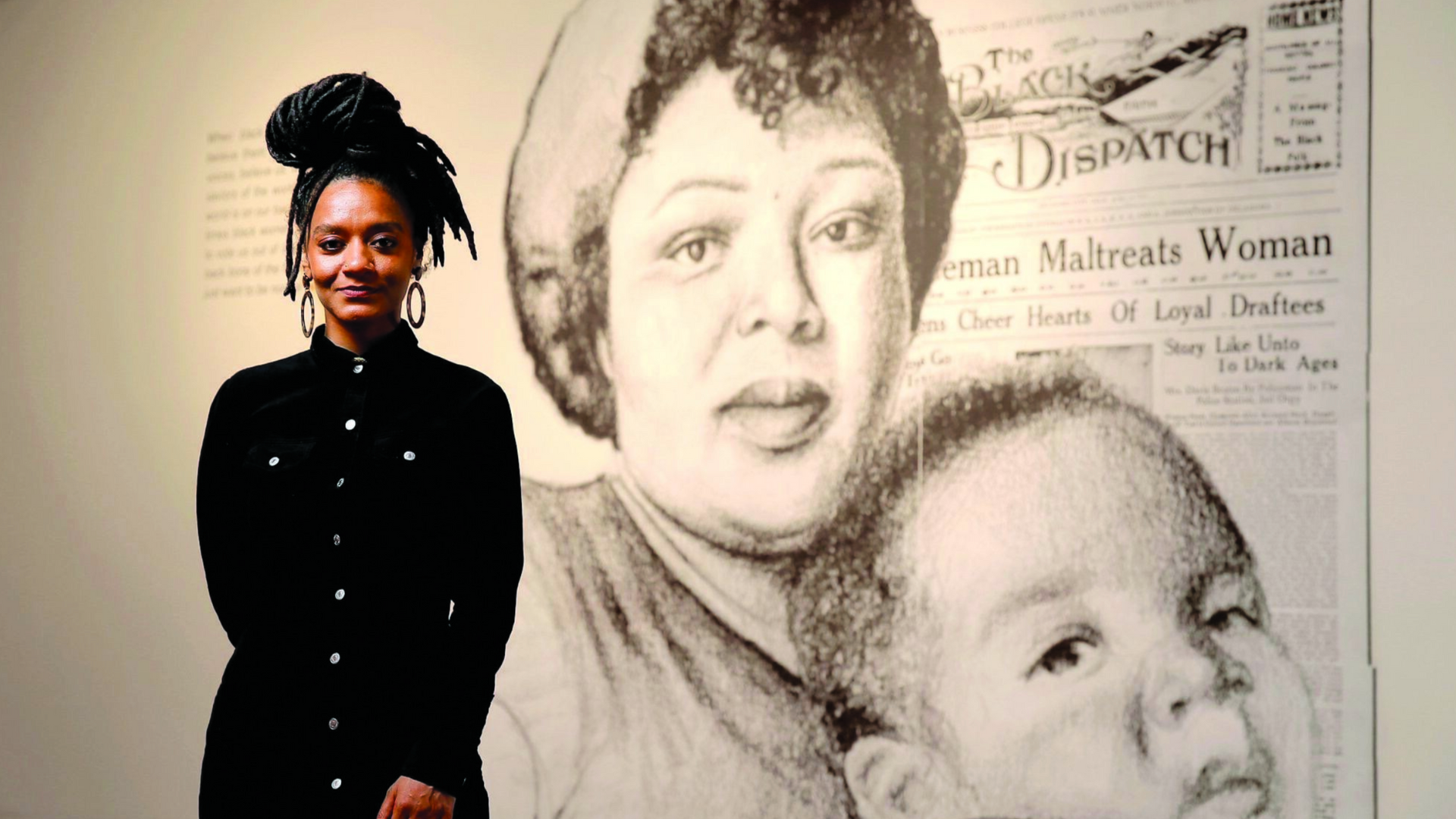By: SEBASTIAN PHILLIPS

A new exhibition, Speaking to Failing Seeds, at the California African American Museum in Los Angeles offers a discourse on the fears and joys of Black women.
By the time she sat down with the women whose stories would be the basis of her first exhibition for the California African American Museum (CAAM) in Los Angeles, Tatyana Fazlalizadeh had a relatively good idea of what they would say. The conversations revolved around the topics of joy, love, and, most poignantly, safety. As a woman of color herself, Fazlalizadeh had plenty to contribute on the subjects.
“Most of the women I spoke to were in their 30s, and I’m also in my 30s,” says the Brooklyn-based artist. “What I found most interesting was how we all related to each other and were having similar life experiences. I wanted any instances of violence to come out naturally, and those instances did come up, but they came up in relation to intentionally seeking safety, joy, and community.”
Said discourses—which also touched on mental health, economic status, shifting relationships, body image, and past traumas—along with Fazlalizadeh’s own takeaways from those conversations are reflected in Speaking to Falling Seeds. This series of illustrated portraits of Black women enmeshed in landscape, archival photographs, and fragmented text is on view through August 3, 2025.
When Fazlalizadeh thinks back on that day in LA, she recalls how the show’s theme evolved organically; the prevalence of fear in the talks simply reflects our times. According to a 2022 Gallup poll, less than half of Black women in the United States report feeling safe when walking alone at night in the area where they live, compared with about three in four Black men and most American adults overall. “Joy, love, and safety work together,” says the artist. “It’s hard to feel joy and love when you feel unsafe.”
As Fazlalizadeh listened to the women’s stories, a common ground emerged. “Many of the answers went to nature as a place to feel grounded and safe,” she says. “In natural spaces, it was easier for these women to have and create safety and joy.” That revelation inspired the exhibition’s title, taken from Zora Neale Hurston’s novel “Their Eyes Were Watching God.” It refers to a scene where the story’s protagonist converses with the plant life amid her own internal reckoning and rebirth. As Fazlalizadeh puts it, the phrase reflects on how the women in the novel gather natural environments around them, as if nature can serve as a blanket that warms, shields and protects them.
All of those contemplations become tangible through monumental portraits that started as graphite pencil drawings. Subsequently, they were blown up to fit the scale of the walls at the CAAM and then collaged with photography and text.
“I want people to experience the scale of these women, the color and texture of the drawings, the fantastical landscapes,” says Fazlalizadeh. “Whatever that experience is for the viewer, and the feelings they feel by witnessing Black women drawn in this particular way and in this very particular environment is something I am curious about.”

